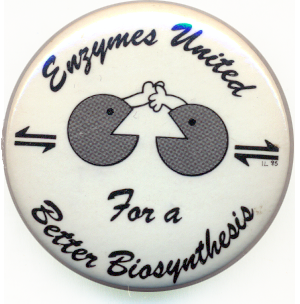Postdoctoral Position available
JUne 2022 – An independent, self-motivated and energetic postdoctoral fellow is sought for position at the University of Maryland School of Medicine in Baltimore. The Lindberg laboratory is attempting to establish the mechanism of action of the neuronally-expressed secretory chaperone proSAAS with regard to its known effects in improving cellular outcomes in neurodegenerative disease (Parkinson’s, ALS, and Alzheimer’s). Current projects involve animal work as well as cell biology and structure-function analyses of in vitro interactions. Prior research experience in cell biology, and hopefully also in neurodegeneration, is required.
If interested, please email a current CV, a brief cover letter concerning your past research as well as career plans, and the email addresses and phone numbers of three references to Dr. Iris Lindberg at ilindberg@som.umaryland.edu.
GRADUATE STUDENT ROTATIONS AVAILABLE IMMEDIATELY
We also currently have rotation openings for graduate students interested in neurodegeneration. You will learn basic techniques in the molecular and cell biology of neurons, including construction of CRISPR/Cas9 vectors to knock out selected genes, immunofluorescence, and biochemical assays of protein aggregation.
If you would like to rotate in the lab (you must be currently enrolled in a University of Maryland graduate program), please send an email to Iris Lindberg at ilindberg@som.umaryland.edu. A minimal eight-week rotation period is required.
Selected Relevant Publications:
Sequestration of TDP-43(216-414) Aggregates by Cytoplasmic Expression of the proSAAS Chaperone.
(2022) Peinado, J.R., Chaplot, K., Jarvela, T.S., Barbieri, E.M., Shorter, J. and Lindberg, I. In press, ACS Chemical Neuroscience
The proSAAS chaperone provides neuroprotection and attenuates transsynaptic a-synuclein spread in rodent models of Parkinson’s disease.
(2022) Lindberg, I.* Shu, Z.*, Lam, H.* Helwig, M., Yucer, N., Laperle, A., Svendsen, C., Di Mont, DA and Maidment, N.T. (2021) * co-first authors – in press, J. Parkinson’s Disease
A protease protection assay for the detection of internalized alpha synuclein pre-formed fibrils.
(2020) Jarvela, T.S., Chaplot, K., and Lindberg, I. (2020) PLoS One. 2021 Jan 26;16(1):e0241161. doi: 10.1371/journal.pone.0241161. eCollection 2021.PMID: 33497415
Secreted chaperones in Neurodegeneration
(2020) Chaplot, K., Jarvela, TS and Lindberg, I.
Frontiers in Aging Neuroscience, August 2020 PMID: 33192447
Increased expression and retention of the secretory chaperone proSAAS following cell stress.
(2020)Shakya,M., Yildirim, T., and Lindberg, I. 25(6):943 PMID: 32691307
The neural chaperone proSAAS blocks α-synuclein fibrillation and neurotoxicity.
(2016) Jarvela TS, Lam HA, Helwig M, Lorenzen N, Otzen DE, McLean PJ, Maidment NT, Lindberg I.
Proc Natl Acad Sci U S A. 2016 Aug 9;113(32): PMID:27457957
Chaperones in Neurodegeneration. (2015) Lindberg I, Shorter J, Wiseman RL, Chiti F, Dickey CA, McLean PJ.J Neurosci. 2015 Oct 14;35(41):13853-9.Review. PMID:26468185
A novel function for proSAAS as an amyloid anti-aggregant in Alzheimer’s disease. (2014) Hoshino A, Helwig M, Rezaei S, Berridge C, Eriksen JL, Lindberg I. J Neurochem. 2014 Feb;128(3):419-30. PMID:24102330
The neuroendocrine protein 7B2 suppresses the aggregation of neurodegenerative disease-related proteins. (2013)Helwig M, Hoshino A, Berridge C, Lee SN, Lorenzen N, Otzen DE, Eriksen JL, and Lindberg I. J. Biol. Chem. 11;288(2):1114-24.

